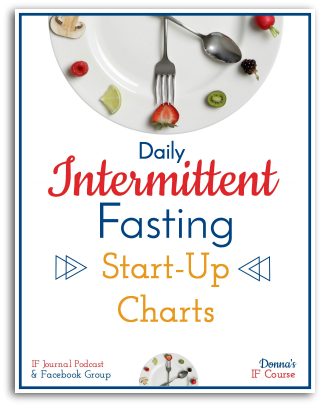Recent Articles
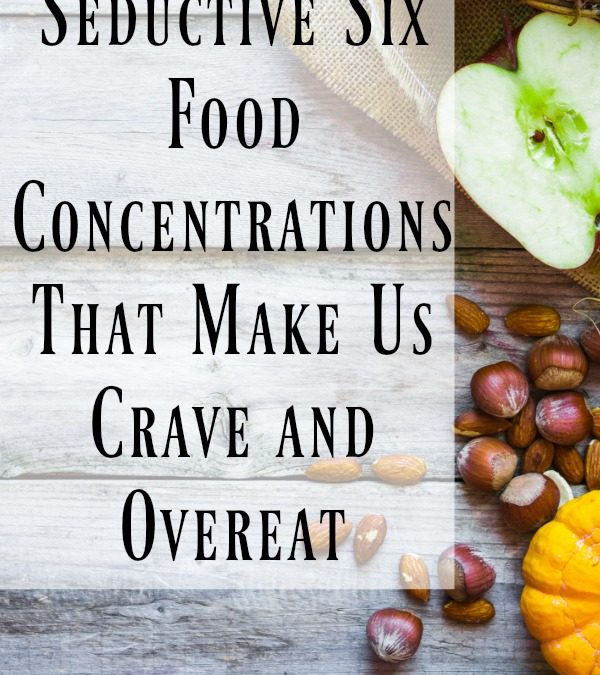
Seductive Six—Food Concentrations That Make Us Crave and Overeat
I’ve been having such a great response to April's "More Real Food" Challenge in my free private FB group. (We are almost done--but all of the previous videos are still there...we would love to have you join us!) Basically, we have been learning about real foods vs....

Intermittent Fasting Journal #46
Donna Reish, blogger, Intermittent Fasting teacher, health seeker, and author of over 100 curriculum books for students shares the Four Ways We Reduce Weight, Inches, and Cravings With Intermittent Fasting in this episode. Donna uses her four quad chart to show the...
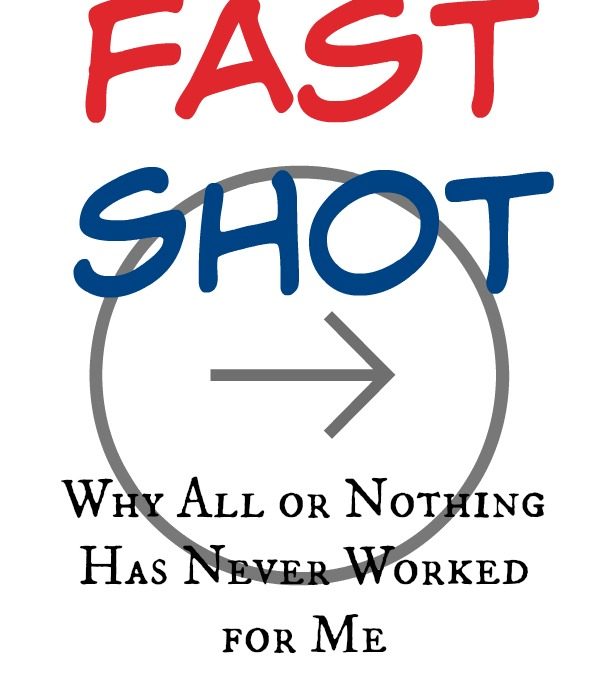
Fast Shot: Why All or Nothing Has Never Worked for Me
So I had that feeling recently... That feeling that I have tried so hard to overcome for three decades.. But I overcame it! If you are one of those “all or nothing” gals—or “make too many changes at one time” gals—you are not alone! So I documented the feeling—and...
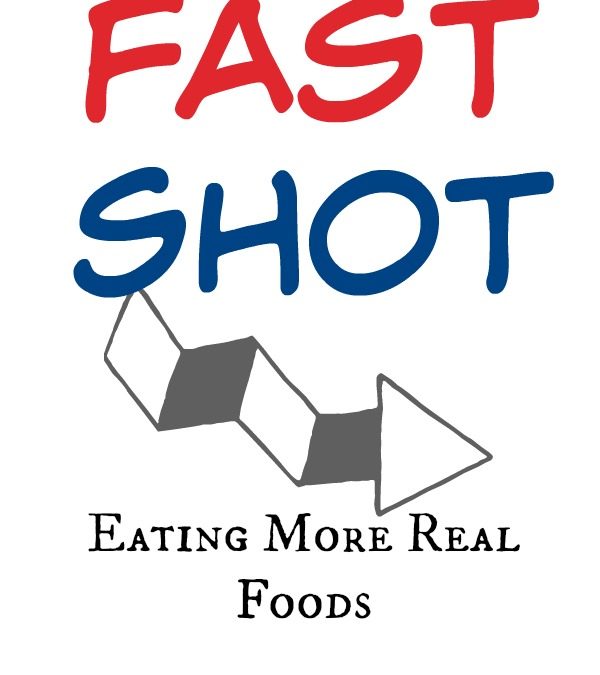
Fast Shot: Eating More Real Foods
Today I have a Fast Shot that I created in my free private FB group (join here!) when I began the April “More Real Food” Challenge two weeks ago. It isn’t quite as “fast” as my fast shots are supposed to be. (Shock, shock!) And it has info in how to join the challenge...
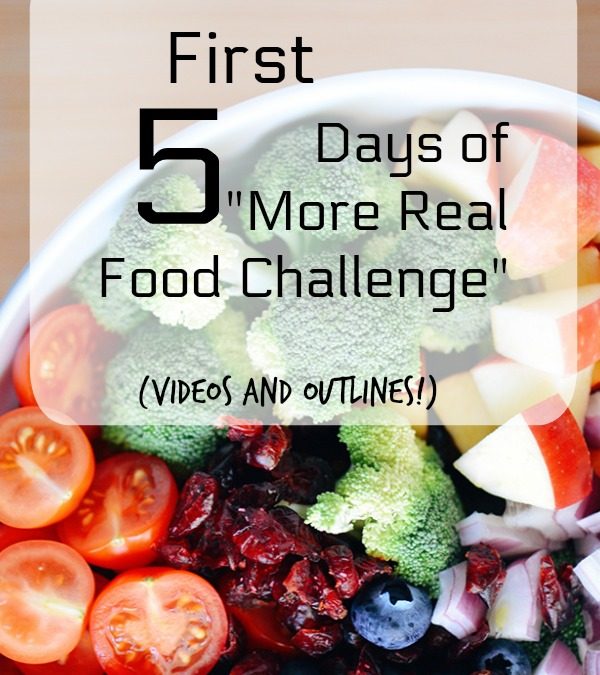
First Five Days of “More Real Food Challenge” (Videos and Outlines!)
Not real food.....do we call it processed food, packaged foods, sugary foods, calorie dense foods, nutrient lacking food, junk food, or something else? And then what do we call Real Food---I mean, it can be in a package, right (frozen veggies, canned fruit, jars of...

April’s “More Real Food” Challenge
So I unearthed some secret to eating and cravings and dopamine spikes and "addictive" properties in food accidentally--and I'm not even a scientist, just a normal teacher who has written dozens of curriculum books. Light bulb moment....me to my husband: "So I figured...

Fast Shot: Sneak Peek of the Intermittent Fasting Course (Check Out These Graphics!)
Coming soon! Sign up by Sunday before the first Monday of the month!!! I’d love to teach you how to use Intermittent Fasting to achieve your weight and health goals!! https://intermittentfastingcourse.com Get 20% off with this code SAVE20 !!! A. Course Lay Out—One...
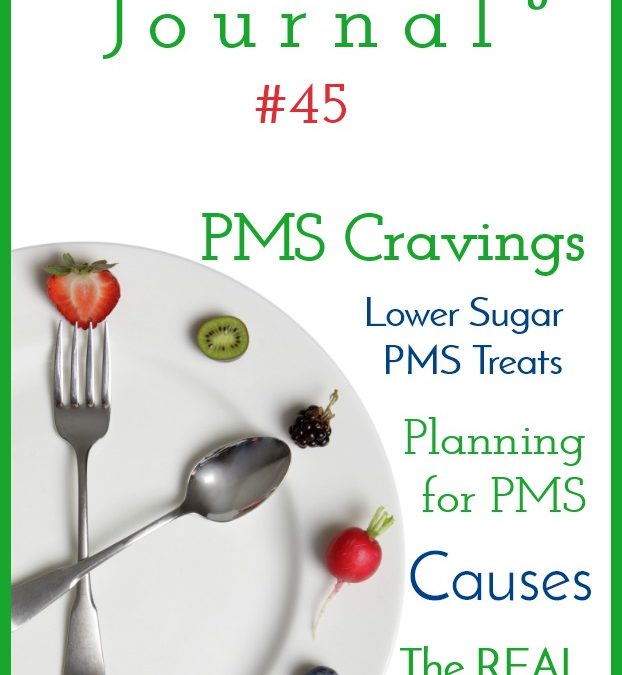
Intermittent Fasting Journal #45
In this Broadcast, Donna Reish, blogger, author of 100 curriculum books for preschool through twelfth graders, seeker of health and fitness, and Intermittent Fasting teacher, talks about PMS cravings and mood issues and how to handle them with Intermittent Fasting and...
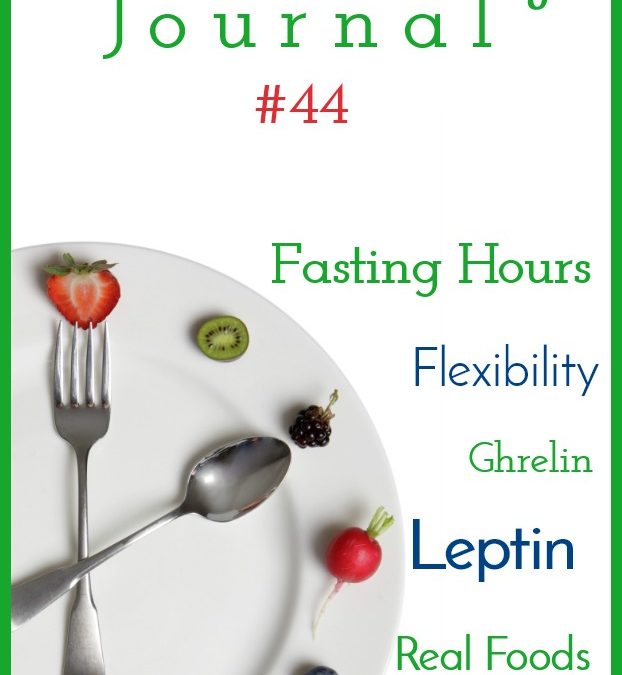
Intermittent Fasting Journal #44
In this Broadcast, Donna Reish, blogger, author of 100 curriculum books for preschool through twelfth graders, seeker of health and fitness, and Intermittent Fasting teacher, talks about what to expect after one month of fasting and what to focus on for your fasting...

Intermittent Fasting Journal #43
In this Broadcast, Donna Reish, blogger, author of 100 curriculum books for preschool through twelfth graders, seeker of health and fitness, and Intermittent Fasting teacher, talks about whether you should continue to fast when weight loss has plateaued, slowed, or...
Fast Shot: Shorter and Longer Fasts—Does It Matter?
In this fast shot, Donna Reish, blogger, author of 100 curriculum books, Intermittent Fasting teacher, and seeker of health, teaches the benefits and downfalls of fasting for shorter periods times vs longer periods of times each day. She begins with understanding the...
Fast Shot: Should You Exercise Fasted?
In this Fast Shot, Donna Reish, blogger, health seeker, Intermittent Fasting teacher, and author of over 100 curriculum books for students in preschool through grade twelve, teaches about exercising fasted. She begins by explaining the three main types of exercise and...
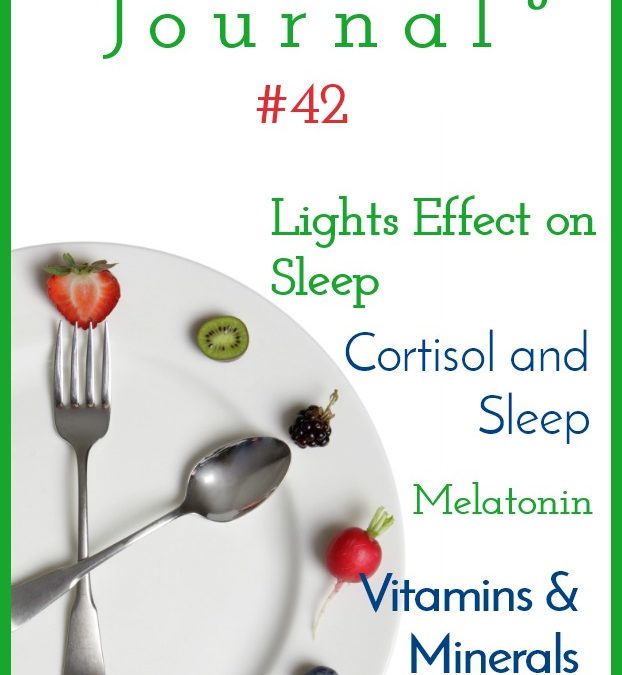
Intermittent Fasting Journal #42
In this Broadcast, Donna Reish, blogger, author of 100 curriculum books for preschool through twelfth graders, seeker of health and fitness, and Intermittent Fasting teacher, talks about ways to improve sleep. She begins the broadcast with her and her husband’s...
Fast Shot: When Water Makes You Nauseous During the Fast
In this Fast Shot episode, Donna Reish, blogger, author of 100 curriculum books for preschool through twelfth graders, seeker of health and fitness, and Intermittent Fasting teacher, talks about the benefits of water and what to do when you can't stomach water...
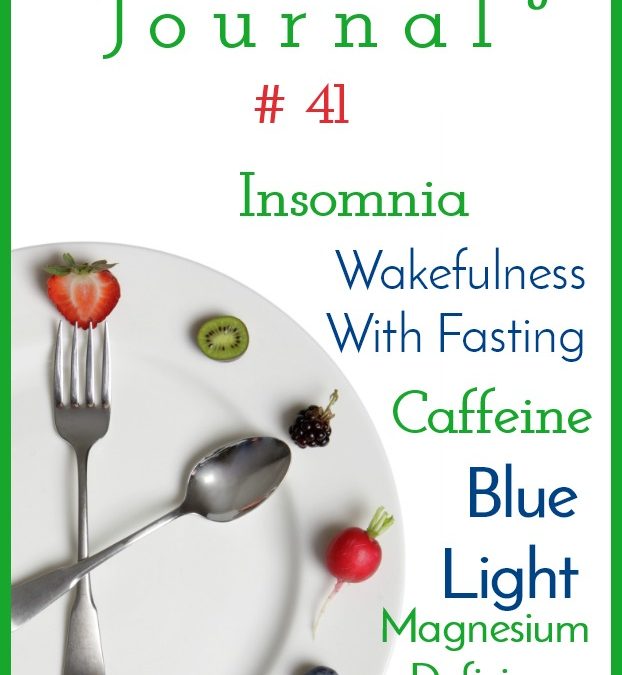
Intermittent Fasting Journal #41
In this Broadcast, Donna Reish, blogger, author of 100 curriculum books for preschool through twelfth graders, seeker of health and fitness, and Intermittent Fasting teacher, talks about insomnia and Intermittent Fasting. She begins the broadcast with her and...
Plexus
Check out the supplements that have changed my life!
Ray & Donna Reish Independent Ambassadors #1382677


Intermittent Fasting Journal #56: How Much Do the Eating Window and Fasting Window Lengths Affect Weight Loss

Should you focus on the length of the fasting period or the food in the eating window for weight loss? Does longer always mean better weight loss? Should you eat differently if you have a short fast or a long fast?
Donna Reish, Intermittent Fasting teacher, blogger, weight loss coach, and curriuculum author, answers these and many other questions in this broadcast. She begins with the “Is IF magic” question.
Then she uses graphics to show four main ways we lose weight, inches, and cravings through IF.
Then she turns her attention to various fasting hours–and their effect on the foods and weight loss. These include 16:8; 18:6; 19:5; 20:4; 21:3; and more.
Follow along with the outline below! 🙂
A. Is IF Magic?
1. The magic of IF is in its ability to
a. Reduce insulin so reduce hunger and cravings
b. Control hunger by controlling hunger and satiety hormones
c. Helping us to lose inches as the body goes into fat burning mode during the fast
d. Keeping all of our food intake in a shortened period of time, which controls total food intake and non-fuel eating (and lets us eat more at one time, which most find more satisfying)
2. Four ways we lose weight, inches, and cravings through IF (see charts below)
B. 16:8
1. Might barely be into fat burning mode depending on food eaten day before
2. Super healthy way to live
3. Eight hours is usually too long to eat and cause a caloric deficit unless there are other parameters in place like two meals only or certain eating protocols
C. 18:6, 19:5
1. Usually enough time to be into fat burning mode, again, depending on what you ate the day before
2. Easily sustainable after the first three weeks or so (body adapts, clock hunger, etc.)
3. Can still overeat! Especially if grazing or not eating real foods
4. Leptin (satiety hormone) often doesn’t recognize drinks, processed foods, etc (this is why people who lost to goal on IF usually eat real foods or a real food protocol)
5. Can be two meals; one snack and one meal, etc. for weight loss
D. 20:4, 21:3
1. Longer fasting gives body a chance to be in fat burning better, but not mandatory
2. Harder to sustain
3. Many people call this OMAD—though most do not just eat one meal but often eat throughout the eating window or a snack, then dinner, then dessert
4. Many OMAD people do OMAD so they can eat whatever they want -but might still have trouble getting to goal (last 10-20 pounds) if eating processed foods/calorie dense foods during your OMAD, especially if not truly only doing one meal
E. Many factors to consider—
F. Join my Intermittent Fasting Course for November to get fasting strong before the holidays!
Halloween Candy, Dopamine Spikes, and Allowing Urges (Fast Shot)
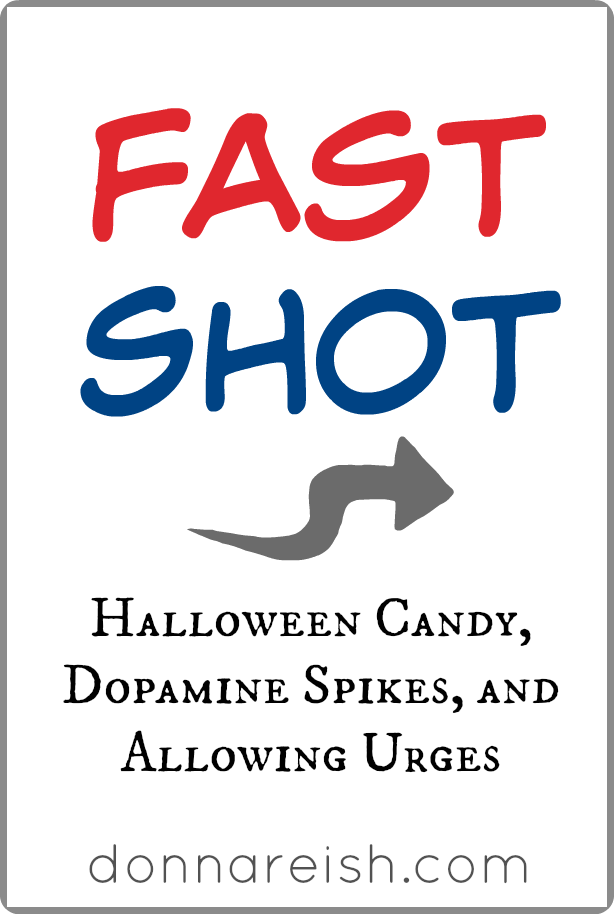
How many Halloween candies do you have left? Which ones are your favorites? Have you ever thought about why those particular candies are your faves? Come to find out, our favorites are often our favorites because of the combination of ingredients that cause dopamine spikes that make us want more and more and more of that candy.
It’s not our faults!
But we can do something about it!
Yay us!
In today’s Fast Shot video, I explain why the top three Halloween candies hold those spots in our tummies!
I also explain The Hungry Brain’s “Seductive Six” or hyper-palatable combinations that lead to overeating–and give you five work-able suggestions to reduce those cravings with Halloween candy–and all holiday goodies. These five tips are ways we can “hack” our bodies and brains and thinking and habits! I love hacks!
Let me know if these tips help you–and let me know how I can help you in the future! I want us all to succeed!!
A. Favorite Halloween Candy According to Monmouth University Study
1. Reese’s Cups (36%)
2. Snickers (18%)
3. M and M (11%)
B. Why Those Three?
1. They have what Dr. Stephen Guyenet (The Hungry Brain) calls “Seductive Factors”
2. They are hyper-palatable
3. These are the “Seductive Six” that, when combined, cause huge dopamine spikes (combined, they all lead to a food that is “calorie dense”)
a. Fat
b. Carbohydrate
c. Protein
d. Sweet flavors
e. Salty
f. Unami (meaty, savory flavor)
4. All of the top three candies have three to five of the Seductive Six elements
5. The more calorie dense/unreal/seductive the foods are, the more dopamine we release—the motivation/habit chemical in the brain
6. This is why we don’t get “fat” from Starburst or licorice! (And they those types of candies are not in the top three Halloween candies!)
C. How Can We Ward Off the After-Halloween Urges
1. Believe that urges are not urgent
a. We think they are
b. We think they overtake us or creep up on us, etc.
c. We don’t think we are an active participant in them!
2. Practice fasting!
a. Your insulin will go lower during the fast, and cravings will be reduced
b. Your satiety and hunger hormones will balance more—and you will hear them better (though remember that we don’t hear them as well with processed foods)
c. Your eating window will be less—which has to help at least in part simply by time constraints
3. Create barriers
a. Get rid of leftovers
b. Don’t be afraid to throw them away
c. Tell your kids not to let you have any of their stash
4. Plan for them
a. How many are you keeping?
b. When will you eat them?
c. Don’t eat them any time other than when you have planned for them!
d. Planning ahead uses your adult brain rather than your toddler brain!
5. Space out time between treats (especially highly seductive or hyper-palatable)
a. The longer you wait between treats, the less dopamine is released
b. New neuro-pathways are created in the brain
c. Unanswered urges become fewer urges or even no urges
d. I want to teach you not to resist (or fight!) urges…I want to teach you to feel the feelings and sit with urges without giving in until you have very few urges
e. So much better to not have urges than it is to fight them over and over! (Check out Broadcast #57 and #58 for a two-part video on Willpower!)
D. I’d Love to Teach You More
1. Free IF Webinar: https://intermittentfastingwebinar.com
2. Month-long Intermittent Fasting Course: https://intermittentfastingcourse.com
3. Private weight loss coaching: email characterinklady(AT)gmail.com
Fast Shot: How My Husband and I Lost Weight During the Last Two Holiday Seasons (and Why Beginning IF Is Amazing During This Time)
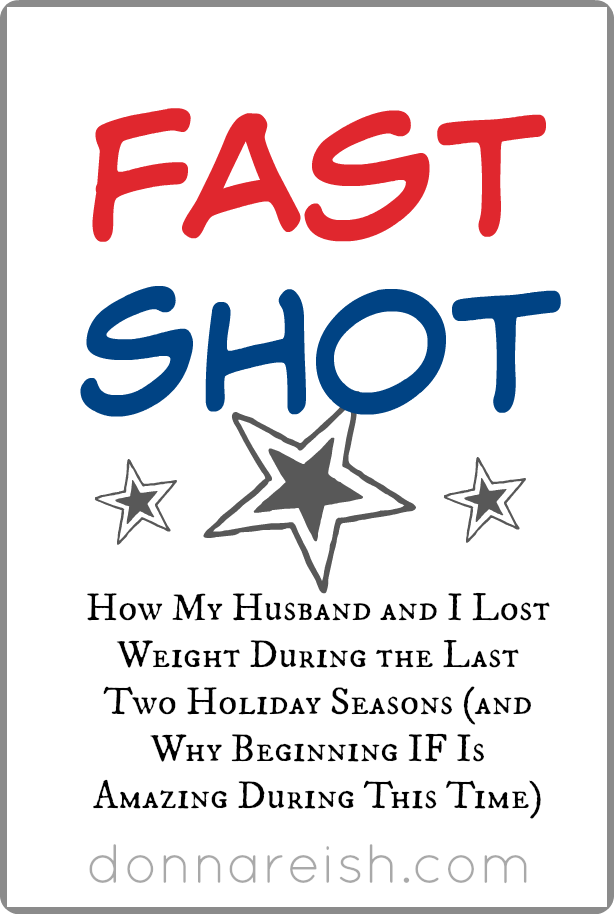
Welcome to another Fast Shot video. This is a timely one–and one that I hope will convince you that the holiday season is the ideal time to begin Intermittent Fasting! I know..I know…most people STOP their eating protocols during the holidays, not add new ones. But IF is the PERFECT protocol to begin during the holidays as it will truly help you get a handle on those holiday goodies and heavy foods WITHOUT so much white knuckling and super human willpower! (Honest!)
So join me fasting….and join me in the course too if you want daily help for a month! I’d love to help you! intermittentfastingcourse.com
And…as always…my detailed outline! (Aren’t you so glad I’m an English teacher and curriculum author of over 100 kids’ curriculum books? lol)
A. Began IF October and December 2017
1. Might have heard my story—began IF to “eat whatever I wanted” during October of 2017
2. Might have heard my husband’s story—began IF so he could dance with me (sigh….all the feels!) the first week of December of 2017
3. Both of us have lost weight during the holiday season 2017 and 2018
Sign up for November course–use code SAVE20 to get $20 off! https://intermittentfastingcourse.com
B. Five Reasons the Holiday Season Is the BEST Time to Begin Intermittent Fasting!
1. You can eat whatever you want—diet food or your regular food (depending on your health goals)
a. People don’t want to “start diets” because they think they can’t keep them during the “food months”—
b. But you don’t have to “stay on a diet” to practice IF (unless you want to!)
2. You don’t use up all of your willpower during the day when you practice IF
a. Four hours of temptations per day
b. 119 food thoughts per day
c. Probably more during holidays!
d. You get fat adapted after the first couple of weeks and no longer need willpower for fasting—and all of your willpower is saved up to use during your eating window!
3. You will likely lose weight during November and December if you begin IF
a. Most people go into the new year gaining weight
b. Even with eating a relatively SAD (standard American diet), you will likely lose weight if you practice IF during November and December
4. You will likely eat fewer treats and less heavy foods after several weeks of IF
a. You will probably eat way less than you usually do during November and December
b. Obviously, you have less time to eat, which can (or might not) affect your total intake
c. But the longer you fast, the higher your leptin (satiety hormone) is and/or the better you hear it
i. This leads to eating less over all
ii. It also affects the types of foods you choose
iii. AND…it even makes you want to move your body—all things we need during food-heavy months
5. You will be ahead on January first when you are usually just starting to try to “lose the holiday weight”!
a. Research shows that 55% of resolutions are health related
b. And only 8% of people keep them
c. Most fall off by January 12th
d. You can make IF a way of life—not something you fall off of or start/stop!
e. Even if you eat a SAD, your health will be positively impacted by the fast itself (brain health, immunity, disease prevention, blood sugar reduction, and more) and you will likely drop weight as well!
C. No Downside to Starting IF During the Holidays!
1. Only health benefits
2. Potential weight loss
3. More control during the holidays
4. Feeling great in two to three weeks (lose that afternoon sluggishness—oh, I LOVE this about IF!).
5. Balancing of hormones insulin, leptin, and grehlin that is usually only seen in extremely low carb keto diets (75% fat, 20 grams of carbs) or extremely low fat (20-30 grams a day!)
D. Learn How to Fast Incrementally and With Support!
1. Daily 20-30 minute teaching videos that you need to know for each day on Day 1, Day 2, Day 3, etc.
2. Private FB group and access to me to answer all of your questions as you learn
3. Amazing video teaching, outlines, and graphics to help cement all of the concepts
4. Incremental—what you need when you need it so that you are not overwhelmed
5. Help during the first two to three weeks as you balance your hormones and get over the “hangries”
6. Tools, tips, and tricks not taught in any other IF program!
7. “A month to learn it—a lifetime to live it!”
8. https://intermittentfastingcourse.com
Finding Your Fasting Hours Sweet Spot (Fast Shot)
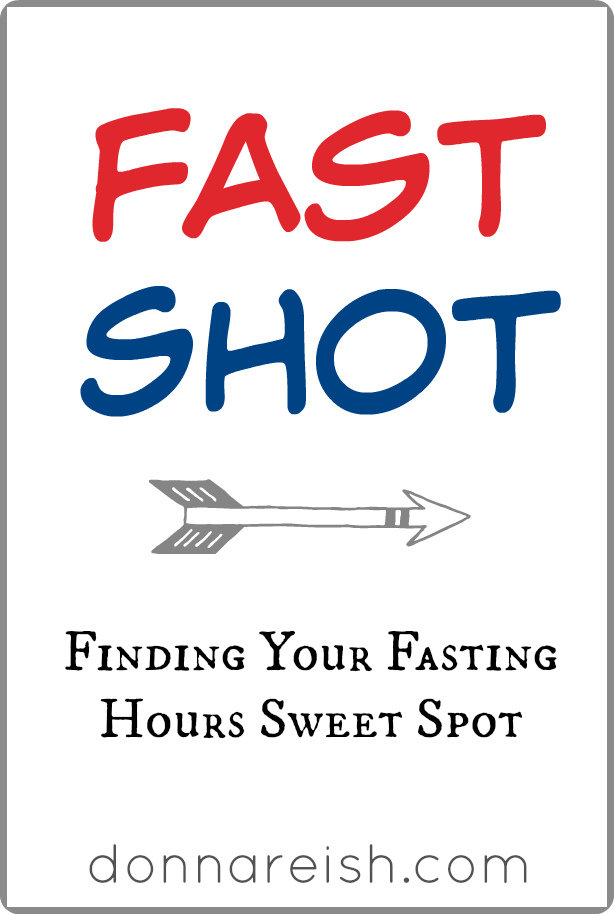
How can you find your fasting sweet spot?
That is, find the time of day and eating window time that works best for YOU!
Remember, there are four main elements that affect our weight loss, inch loss, and craving loss with Intermittent Fasting. These four components can influence your eating window.
Once you apply those, you also need to personalize it–how to see which end of your waking hours work best for you to not eat vs. when you have the most difficulty with fasting.
Here’s the short (!) Fast Shot Video and mini outline for you!
Fast Shot: Finding Your Fasting Sweet Spot! (No Pun Intended)
A. Four Things That Affect Weight, Inch, and Craving Reductions
B. Total Fasting Hours
When would you like to be awake without food?
Sleep and fasting
C. Counting Fasting Hours vs. Eating Hours
Averaging
Adjusting
Take my FREE hour long webinar where you will get your fasting questions answered—“10 Intermittent Fasting Questions”! https://intermittentfastingworkshop.com
Emotional Eating and the Model Part I of V (Fast Shot)
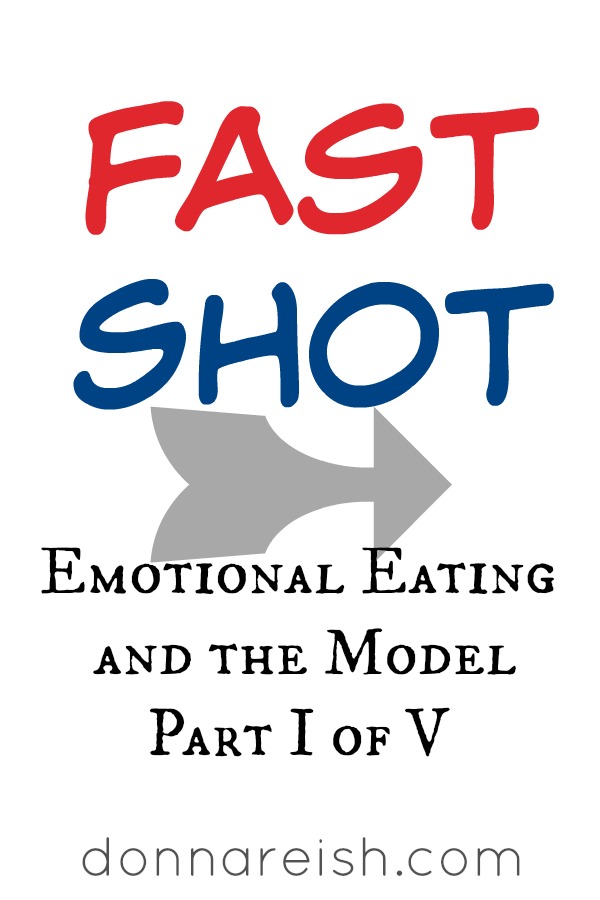
Emotional eating. How can we overcome it? Or why does it often feel like it is overcoming us?
I always thought our cravings, appetites, urges, binges, and eating were out of our control. That they just happened to us.
Until….
I learned I could control hunger, insulin responses, and even cravings to a certain extent with supplementation.
I could control hunger, insulin responses, much emotional eating, and cravings with Intermittent Fasting.
I could control cravings, urges, and binges through real foods.
And now….
I have learned that I can control urges, binges, and emotional eating through controlling my thoughts and feelings. It is absolutely incredible—and I am excited that my weight loss coaching school gives us permission to use Brooke Castillo’s materials in our teaching (with proper accreditation, of course!).
So…let’s dig into how we can control our responses to urges and binges and emotional eating through the use of Brooke’s Model for life coaching.
I’ll see you soon in Part II of V—- I can’t tell you how much I want to teach you this life changing information! And how much goodness I want for you in your life!
A. Introduction
1. Believe that life is 50/50—50% good and 50% bad
2. Circumstances, thoughts, feelings, actions, and results can all go into Brooke Castillo’s Self-Coaching Model in order to feel our feelings as they are, change our feelings, change our actions, change our results, etc.
3. MODEL—
C—Circumstances
T—Thought
F—Feeling
A—Action
R—Result
B. Five Model Choices for Emotional Eating
1. Part I: Keep the original model—and feel the feelings if the actions do not have a net negative consequence (grief—crying, watching Netflix for a couple of hours, but no real negative net consequence, and I want and need to feel these feelings.
C—Aunt’s funeral
T—I’m so sad my dad died
F—Grief
A—Lie in bed crying, text my sister, watch Netflix for a couple of hours
R—Red eyes, feel better, no harm
2. Part II: Keep the emotion (grief), but change the action and the thought (see below)
3. Part III: Change the thought in order to change the emotion and the action
4. Part IV: Keep all the same and learn to sit with the urge/feelings as they are
5. Part V: Keep all the same and give in to urge (resulting in a net negative in your life)
C. Choice One:
Keep the original model—and feel the feelings if the actions do not have a net negative consequence (grief—crying, watching Netflix for a couple of hours, but no real negative net consequence, and I want and need to feel these feelings.
C—Aunt’s funeral
T—I’m so sad my dad died
F—Grief
A—Lie in bed crying, text my sister, watch Netflix for a couple of hours
R—Red eyes, feel better, no harm, no emotional eating since my thought did not Link my sadness to giving in to urges (see Part II of V)
D. Summary
This is a clean model—that means that I don’t feel the need to change anything. When we have thoughts and feelings that lead to emotional eating, we have to dig in to our brains and change our thoughts and feelings so we can choose healthier options rather than over eating or bingeing or giving into cravings.
It might feel overwhelming right now—but stay with me! It’s worth it—and it works!
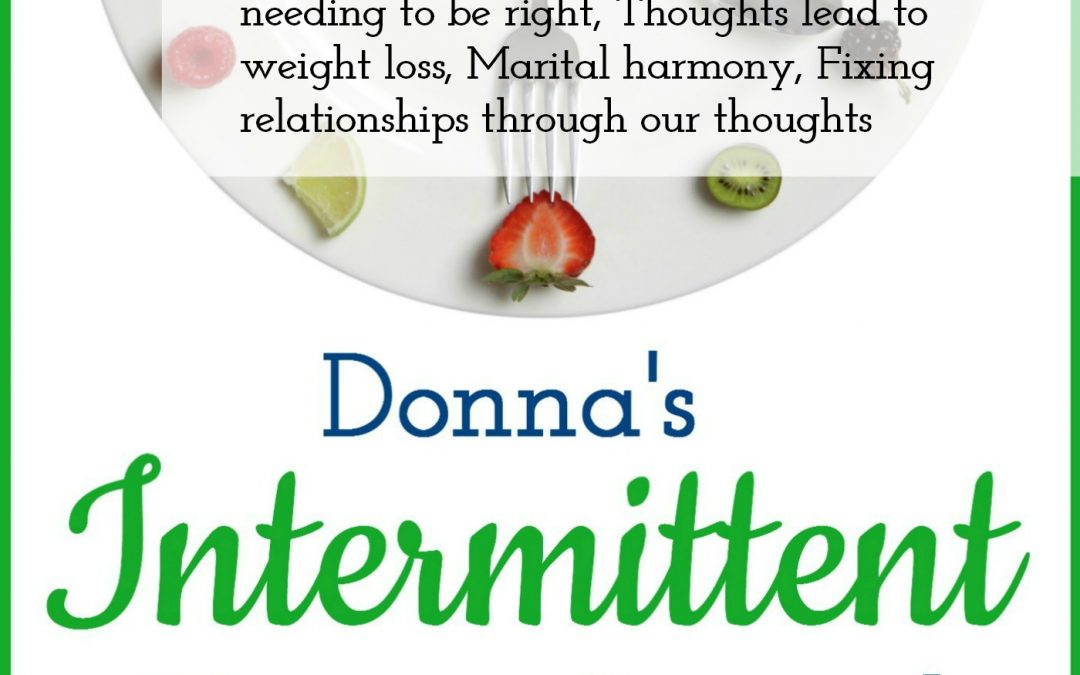
Broadcast #55: Make a Relationship Better by Tomorrow (Or…What Does Learning Pickle Ball Have to Do With Our Thoughts and Marital Harmony?)
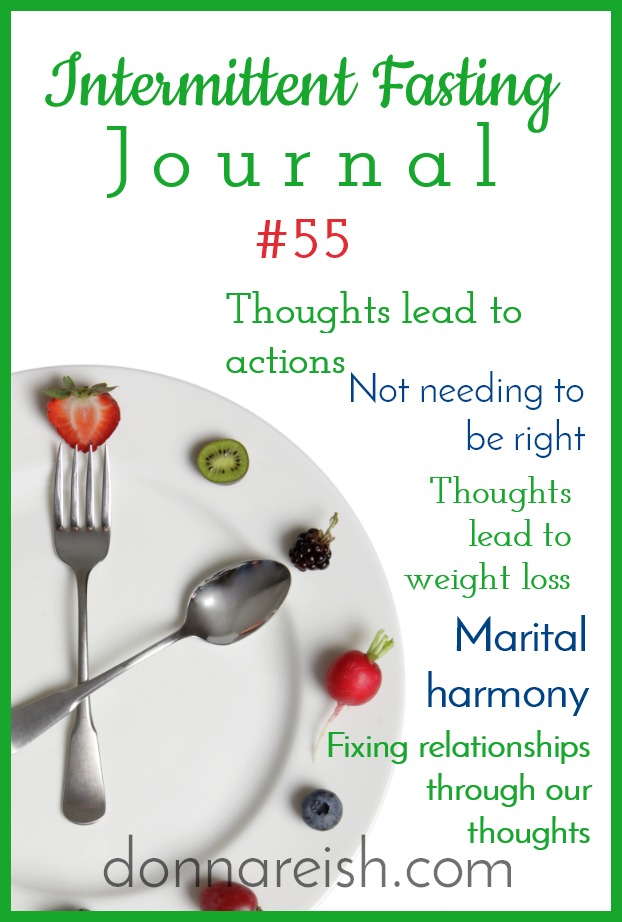
Are you getting tired of me telling you that you can control your thoughts–and that if you do control your thoughts, you will change the actions you take?
(Have you been following the thoughts and Emotional Eating five part series in the private FB group? Join and search Emotional Eating and the Model to see all the videos!)
Well….I hope you’re not too tired of it because I have a broadcast for you today that spells it out so clearly in a recent example in my marriage—our Pickle Ball Learning!
Yep…something as simple as learning pickle ball can cause us to think negative thoughts about people–and respond negatively to them!
Or we can control those thoughts and make the relationship better IMMEDIATELY!
How cool is that? That we have the power to make a relationship better by changing our thoughts?
I love this so much!
I have so much weight loss, fasting, fitness, cravings, and more to share with you…
But I am learning as I near the end of my weight loss and get ready to move into weight management—that so much of weight loss and weight management is truly in the mind.
Control the mind–and we will control the weight much better.
So let’s start today…with a pickle ball game…
And then we will carry it over to weight loss!
I have a thorough outline for you (you’re welcome—you know I love my outlines!). Enjoy–and think good thoughts!
A. Pickle Ball!
1. Watched Youtube videos
2. Ray Baby told me 543 times (okay, 543-500) how to do it while we played
3. Yet we still kissed every time we switched sides on the court!
B. Why?
1. Because our thoughts lead to our actions
2. Each time Ray Baby told me what to do, how to hold the racket, how to serve, and how to correct my mistakes, I was free to think anything I wanted…..
a. “Why does he keep telling me what to do? It’s not like he’s a Pickle Ball champ!”
b. “He is so helpful and kind. He always gives good advice. I love it that he wants me to improve so we can enjoy it more!”
3. What I thought each time he “coached” me would determine my actions next
a. Why does he keep telling me what to do—my actions would be anger towards him, discord, and unhappy game
b. He wants to help me so we enjoy it more—my actions would be kindness and gratefulness towards him; unity; and happy game.
C. Why Do I Have to Think These Thoughts If He Doesn’t Towards Me?
1. First of all, thankfully, we’ve been in this together long enough that he does too—we are both willing to think the thoughts and have the actions that lead to our marital joy
2. My kitchen instructions
3. What if he doesn’t do it too?
a. Does that make my thoughts and actions any different?
b. I have complete control over how I think, feel, and act in situations—and it isn’t based on what he does!
c. His thoughts and actions have no bearing on mine
D. You Can Be Right or You Can Be Happy
1. Doesn’t happy feel better than right?
2. Every time we do something petty (like respond negatively in pickle ball), we are making the choice to be right—and it never leads to happiness
a. Leads to drama
b. Leads to discord and disunity
c. Takes time to get back to where you were—and it wasn’t necessary at all!
3. Every time we do something like the “high road” (like respond positively in pickle ball), we are making the choice to be happy—but not right
a. Leads to unity
b. Leads to a continuation of love and joy in the relationship instead of going backwards over something that is absolutely not worth it!
E. We Were Taught This Forever
1. “Golden Rule”
2. “Put others before yourself”
3. “Think on these things”
4. “Take ever thought captive”
5. But for years I applied it to my life in terms of “the right thing to do”
a. It’s way more than the right thing to do
b. These thoughts and actions lead to true happiness and unity
c. These thoughts lead to a peace and harmony that you will never get “being right”
F. If Thoughts Lead to Actions…
1. We choose what we want to think
a. Stop saying “I can’t control it”
b. Start slowing down and purposely thinking a better thought
2. We think—then we act Period.
3. Thus, we can see our action (cold shoulder, animosity, fighting) and go backwards….
a. If we don’t like our actions, we must change our thoughts
b. Take the negative action and trace it back to the unhelpful thought
c. They are directly and fully linked
4. You can do this NOW! You can have a different relationship with someone tomorrow by thinking differently
a. Stop blaming
b. Stop trying to be right
c. Take 100% responsibility for the relationship—regardless of what the other person does
d. It might be hard…but it gives way more joy than the other options!
G. Learn More About “Good Thoughts Living”
1. https://donnareish.com
2. Donna’s Intermittent Fasting Group
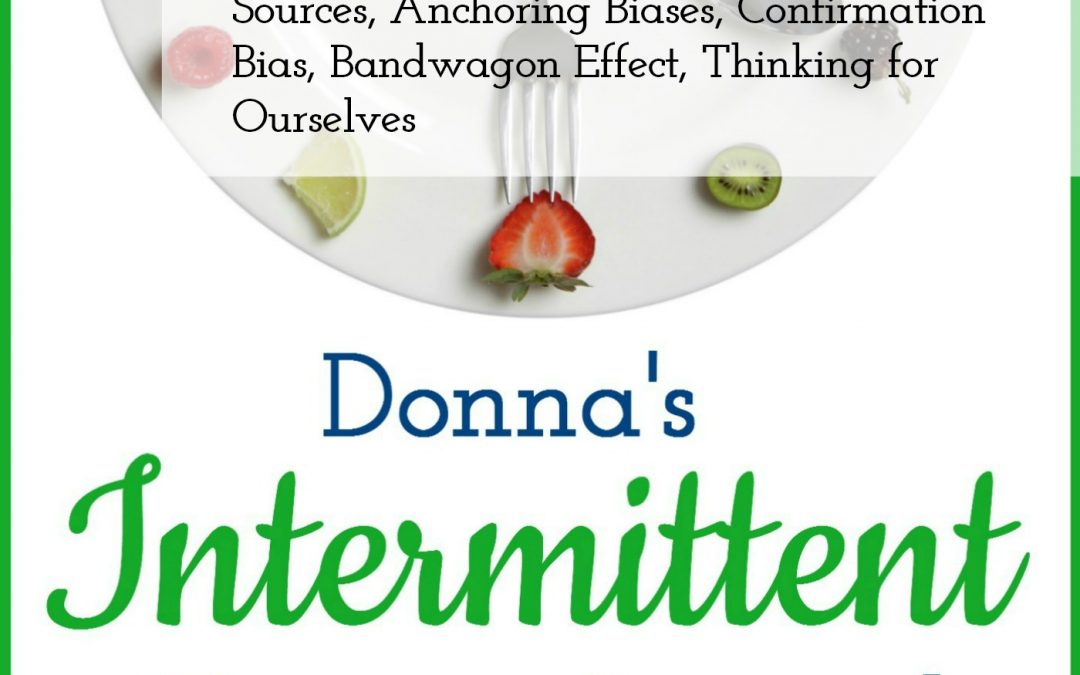
Logical Fallacies (Broadcast #54)

In this broadcast, curriculum author, IF teacher, and former debat coach, helps listeners cut through the noise when it comes to claims, beliefs, and research about weight loss, macronutrients, and more. She begins by drawing on her experience as a high school debate teacher and coach to point out that the terms people are using must be defined in order for us to put them in context and see if they apply or not. Then she explains what logical fallacies and biases are–and how they apply to all people at all intellectual levels. Then she delves into the six common logical fallacies and biases with their definitions, explanations, applications, and what to look for with each one. These include anchoring bias, choice supportive bias, confirmation bias, ostrich bias, bandwagon effect, and false consensus effect. Her hope is that we will use three lenses to evaluate whether something works for us or not in applying what we hear and read:
(1) Personal Experience
(2) Outside Observations
(3) Robust, reliable research
A. Why I Want to Teach About Research and Thinking
1. Reading specialist masters work, language arts curriculum author, former high school debate coach, parent of seven adult kids whom we wanted to teach to THINK!
a. Teach levels of reading—literal, inferential, critical
b. Teach our kids not to believe everything they hear or read—to consider the source, experience, repeatability, logic, etc.
c. Teach our kids to be wary of people using the words never, ever, always, not, none, all, etc. (in our case, you will NEVER lose weight if you eat carbs or you will ALWAYS gain weight if you eat fat!)
2. Debate
a. Define terms—so many people do not do this when citing weight loss info
i. Calories in/Calories out doesn’t work (what doesn’t work about it?)
ii. We know insulin is all that matters ? (Matters for what?)
iii. We can see calorie restriction doesn’t work from the Biggest Loser study? (How doesn’t it work—-they lost weight, so it worked; if you mean they couldn’t sustain the protocol afterwards, then that part didn’t work)
b. Evidence from a credible source
i. Trained our debaters to point out right or left wing extreme publications
ii. Trained our debaters to point out sources that funded their own research for their stance
iii. Trained our debaters to point out sources that were “magazine-like” rather than true journal publications
3. Nutrition and politics!
a. Everybody has an opinion
b. Throw research around like it’s gospel regardless of source, date, repeatability, robustness, etc.
c. Confusing!
B. Why We Believe One Over the Other—Logical Fallacies and Biases
1. Who and what they appeal to
a. They appeal to the group and tell you that you are smarter (or make you feel that you are smarter—you and this whole group believes this, so it can’t be wrong!)
b. Appeal to the part of the brain that deals with emotion—the amegdela
c. They appeal to a primitive reaction (toddler brain)—making us feel smart
2. People who fall for logical fallacies and biases can be any intelligence level
a. Studies have shown that highly intelligent and less intelligent people fall for them equally (because of the part of the brain they appeal to—we all have that part of the brain working for emotional appeal, regardless of IQ)
b. Two race cars example
i. Can have two race cars—a beautiful, shiny. Fast,, new one and a clunker that hardly moves
ii. If both of them are turned off, the faster one still won’t “win”
iii. True with intelligence and logical fallacies—even someone who is extremely smart who is not thinking with their pre-frontal cortext but instead is being driven by emotion (amegdela), they still wouldn’t “win the race.”
C. Six Common Logical Fallacies and Biases
1.Anchoring Bias—Believing the first piece of evidence you receive
a. This is super compelling in weight loss/nutrition—-we learn something from one source then any source that disagrees with that first source is automatically wrong
b. Since you have that first piece of “evidence,” you feel smarter even when other opinions are presented
c. Example:
i. I used to attempt very low carb and some keto. When I branched out, I was biased against carbohydrates, saying things like “If you’re going to eat an apple, you might as well eat a Snickers bar. At least it has some protein too.”
ii. My bias was anchored on the first belief that all carbs are bad—even healthy ones.
d. Things to look for: Do you never change your mind with new data?
2.Choice Supportive Bias—can’t see drawback in your own position
e. Once we make a choice, we can’t be wrong
f. We feel smart with our original choice and do not want to admit we are wrong
g. We won’t believe any downsides in our original choice because it makes us look like we were wrong; another choice or future info can’t be right
h. Research and critical thinking
i. Even good research can’t convince us when we have that first “must be right” choice
j. Tip: Be just as critical about what you don’t believe as you are about what you do believe.
k. Example:
i. I believed and taught that you should open your eating window with low carbs to keep insulin low for the first part of your eating window.
ii. I didn’t want to see any downsides to this (satisfaction, too many calories, etc.) since I felt that my original choice was right and I had been teaching it.
iii. Hard for me to go back now and say just open with real food—-not overeating (i.e. too many calories) and not concerned with macros, even though I know this is a more satisfying and potentially less caloric way to open your window.
iv. (Note: Many people NEED to open their window with low carb foods to keep cravings lower, but I no longer teach it as universal as it doesn’t help everyone.)
k. Things to look out for: Can you list the problems with your position?
3.Confirmation Bias—looking for evidence that agrees with something we already believe
a. We look for articles, studies, blog posts, FB posts, etc. that agree with something that we already agree with
i. This forces us to exclude good research or conflicting information
ii. It also forces us to stay in our own shell and only listen to people whom we agree with
iii. Makes us feel smart to find things that agree with us
b. For instance
i. The only reason we read through a thread on social media is for your own pleasure
ii. No research—just the fact that it confirms your bias towards something
iii. Confirming our biases makes us feel smart
c. Example:
i. We believe insulin is all that matters in weight loss, so when we see a study about how thousands of people lost weight with calorie restriction, we won’t open it—-can’t be true anyway.
ii. We purposely only seek out what we agree with.
d. Things to look out for: Do you seek out information because it makes you feel good?
4. Ostrich Bias—ignoring negative research or contradictory info
a. Similar to confirmation bias
b. Decision to ignore negative info or research to the contrary
c. We ignore it entirely, sticking our heads in the sand
d. Example: I did this with Diet Coke—-wouldn’t read the info or research. Would delete articles people sent me.
e. Things to look out for:
i. Have you ever purposely looked for opposite research?
ii. Have you ever said, “There is no evidence for _____”
5. Bandwagon Effect—cultural…something is popular everywhere, so people believe it
a. Huge in social media
b. This is probably the biggest bias we face today because of social media—so easy to join a bandwagon and be confirmed in what we believe every hour on the hour!
c. Fads/popular/cultural
d. We must be smart because so many people believe this!
e. Example: Breakfast is the most important meal (adults only—children and teens have different nutrition needs)….so many joined this bandwagon!
f. Things to look out for:
i. Have there been longitudinal studies on your position?
ii. Is there a consensus in the scientific community or is it primarily pushed by influencers?
6. False Consensus Effect—your group has special knowledge and knows more than other groups
a. Within a bubble
i. One of the biggest ones for people in live groups and social media groups
ii.When we are immersed in a certain belief with people who have that same belief all the time, we think that’s how everyone thinks or that is how everyone should think.
iii. Similar dynamics to bandwagon except not as universal—more in a bubble of a group
b. Bandwagon vs. consensus—this is often counter popular (going against the culture)
c. This effect also feeds into our self esteem—because people agree with us.
d. Example:
i. I was in an exercise group that said that weights were bad for you. I agreed with them, said I could never do weights, said they were boring and ineffective, made jokes about the metal and the clunkiness of weight machines at the Y, etc. because I was under the false consensus effect.
ii. And the group continued to feed into that belief.
e. Things to look out for: Mocking, sarcasm, name calling, ad hominum attacks (impacting the person)
Do You Like Full Meals or Nibbles?

I recently created a video called “My Three Favorite Things About Intermittent Fasting.” (You can watch it here!)
As I was considering what my very favorite things about IF really are, I was surprised to hear the “full meal instead of nibbles” thought over and over. I hadn’t realized how important it was for me to not have what I call “nibbles.”
My definition of “nibbles” is those little 200-400 calorie bites or drinks that a person who wants to lose weight but eats or drinks 6+ times a day has to have
In other words, if you are trying to lose weight and, theoretically, you need 1800 calories per day to get down to said goal weight (I don’t normally count calories…but bear with me…), you have to divide that 1800 calories among six eating or drinking episodes.
Those are “nibbles.”
Research shows that we WAY under-report eating times when self-reporting (another reason why I like studies done in metabolic wards not self-reported food intake ones!)…..yeah, like WAY under-estimate.
Research also shows that we consume calories 7-10 times in every twenty-four hour period of time (not Intermittent Fasters, obviously).
Research additionally shows…..I’m almost done with these…lol….and this one was hard for me to swallow….but research shows that calorie counters, trackers, lists, etc., are off by 25% either direction OFTEN. (In other words, we think we are eating a 240 calorie taco, and it is really a 305 calorie taco). Wowsie!
Anyway….back to our “nibbles”!
You drink a 300 calorie latte (is there such a thing..not sure how many calories they have!) first thing. You grab half a muffin mid morning. You know you need to eat light at lunch, so you eat a 600 calorie salad. In the afternoon, after being so good at lunch, you eat a 250 calorie candy bar to give you a sugar rush. On the way home, you eat some of your little guy’s goldfish crackers and grab the apple and granola bar in your purse for another 400 calories. Then you don’t have much left for dinner, so you eat 300 calories of cottage cheese and turkey. And suffer all evening….
AND THAT IS FOR SOMEONE WHO TRULY STAYS ON THEIR 1800 calorie weight loss plan.
Usually, because we’ve spiked our insulin all day—and never gave our body a chance to be without food or drink–we are hungry non stop, and we don’t stick with the 1800 calorie plan.
Our “nibbles” become more like mini meals in terms of caloric load, taking us up to 2500 calories or more–because let’s face it, it is hard to eat or drink 300 calories or under each of those six times. (Of course, most of us can’t lose weight on 2500 calories….)
So in considering my VERY favorite things about Intermittent Fasting (there are soooo many things I love!), I kept coming back to “not having to eat ‘nibbles.'”
Ray Baby and I have settled in to 18:6 most of the time (with a 20 or 21 hour fast thrown in here and there to offset a 16 hour one on a family day). We have settled into 2MAD (two meals a day—one smaller one and one “regular” one).
NO NIBBLES!
I don’t want a cheese stick and six Wheat Thins. I don’t want a latte. I don’t want an apple with peanut butter. I don’t want a granola bar and yogurt.
I want a real meal…..
So that is one of my favorite things about IF.
Whether we count calories, carbs, points, fat grams, macros, or nothing, we still have to create a calorie deficit to lose weight and stay at that caloric load to maintain it (though we can strength train to help us be able to eat more in the future—stay tuned!).
(We “don’t count calories or macros; we count habits and real foods”! But for example’s sake…)
So the question is, do you want to create that deficit through “nibbles” and continual hunger and lack of satisfaction?
Or do you want to create it through taming grehlin, controlling insulin, hearing leptin…..and eating REAL, more satiating foods?
No nibbles for me….
Fasting for life,
Donna
P.S. I can teach you everything I know that has led to this empty-nesting, 56/60 year old couple becoming “The Minus 215 Pound Pair”! Join my October course!
Three Intermittent Fasting Surprises (Fast Shot)

When I began Intermittent Fasting, I quickly found three amazing, actually-life-changing, surprises.
I had already learned that I could burn body fat, control hunger, and reduce cravings.
(Learn more about those IF body/hormone changes at my Intermittent Fasting Course! https://intermittentfastingcourse.com)
But then there were three surprises….
Three things that have helped my husband and I to lose 160+ pounds together in the past two years with IF!
Check out this short video as I explain them….
1) Less emotional eating
2) No nighttime snacking (without pain because my meal was so amazing!)
3) No nibbles—real meals!
I think you would love the IF surprises awaiting you!
Love and hope,
Donna
P.S. Use the code SAVE20 to save 20% off my course!
What Does “Treat” Mean to You? (And How That Affects Your Weight Management)
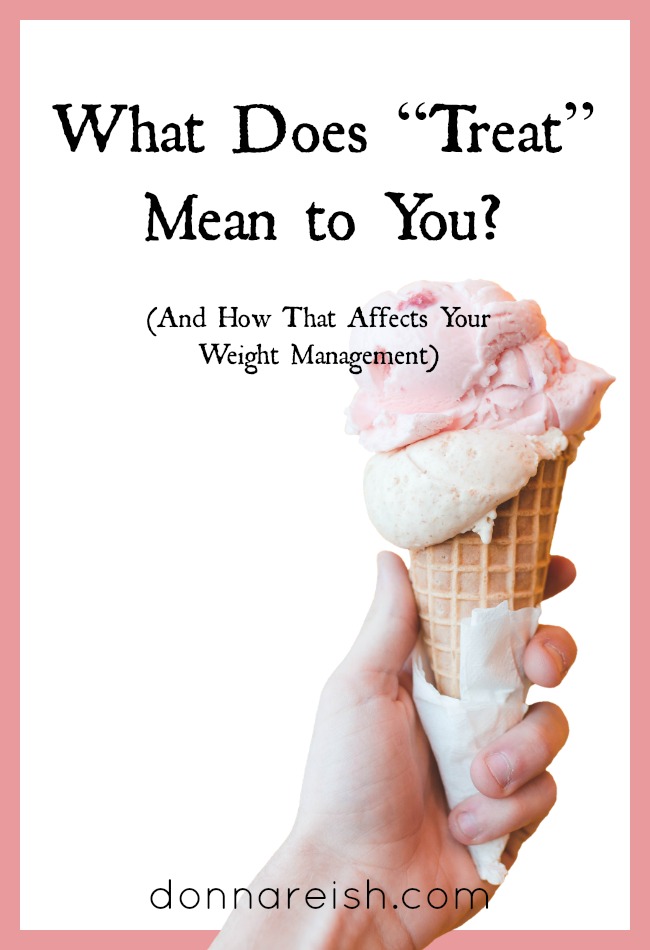
This café has a conveyor belt that serves all-you-can-eat dessert right to your table. keep on reading

Plexus
Check out the supplements that have changed my life!
Ray & Donna Reish Independent Ambassadors #1382677
Contact Me!
Character Ink Press
Downloadable lessons, Language Arts curriculum, Character Training tools & more!
Plexus
Check out the supplements that have changed my life!
Ray & Donna Reish Independent Ambassadors #1382677















